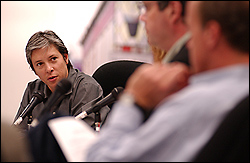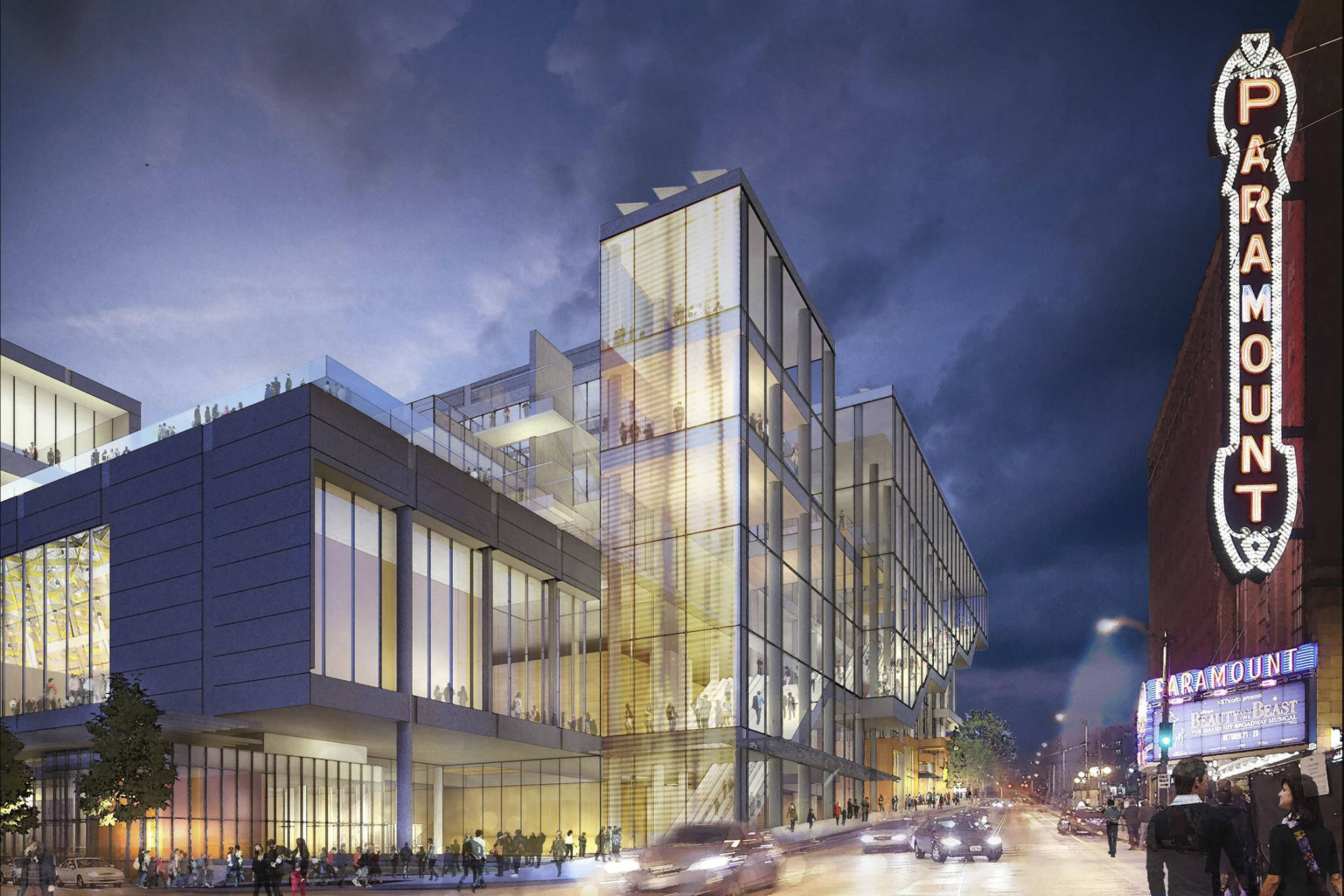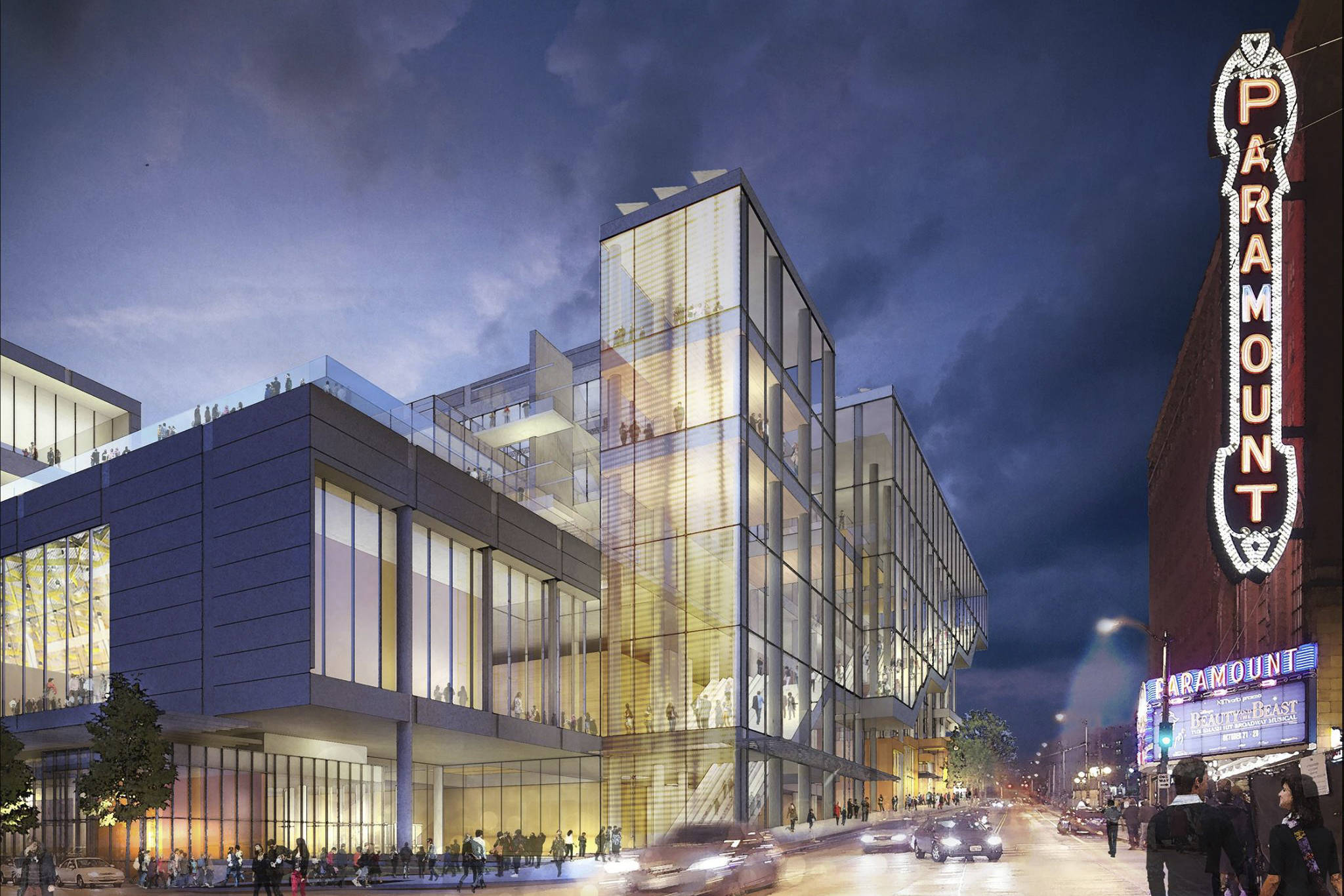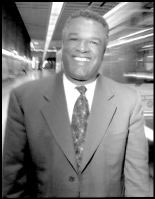As the Seattle Monorail Project is put to voters a fifth time, the Seattle Popular Monorail Authority finds itself weakened by the political and financial miscalculations last week of board members and staff. The board itself—mostly appointed, part time, but comprised of prominent people—is badly divided after months of cultlike resolve. The city’s strong mayor, a monorail cheerleader until recently, is actively opposing the project. And public support slipped during a summer of bad news that included cost estimates of $11 billion and then $7 billion, including 50 years of interest, to build a 13.7-mile line from West Seattle to Crown Hill.
The monorail has beaten the odds before, and in a hastily drafted binding ballot measure, the board last week shortened the line, eliminating service to Ballard. But even with a scaled-back proposal on the Nov. 8 ballot, prospects seem dim that Seattle voters will validate the idea again. Will the people finally kill the boondoggle they voted into existence, or will this farce disguised as a transportation project keep coasting?
It was hard to tell last Friday, Sept. 23, when the Seattle City Council and the monorail board, in separate meetings, tried to outsurprise one another with decisive action. The City Council tried to kill it. The monorail board grabbed it back and tossed it to the people who have always saved it before—Seattle voters, who volunteered to pay a 1.4 percent annual motor vehicle excise tax three years ago. So today the monorail is neither alive nor dead.
The short version of recent crazy events has the monorail board failing to put a new proposal on the ballot by a deadline set by Mayor Greg Nickels (Sept. 15); the mayor then saying he’ll block permits to build the line and asking the City Council to put an advisory measure on the ballot (Sept. 16); the City Council finally affirming, unanimously, the mayor’s plan to block the project (Friday morning, Sept. 23); and the monorail board suddenly seeing the oncoming train and putting the project on the ballot, an hour before the filing deadline that afternoon.
The long version of this tale is steeped with personalities and politics.
Mayor Nickels and the Seattle City Council exercise no statutory authority over the Seattle Monorail Project, which is an independent municipality established by Seattle voters through the initiative process. But City Hall has long made it clear the project cannot move forward without its regulatory support. City officials in both branches, mostly supportive until this year, began to back away when the monorail announced its long-awaited financing plan—the $11 billion version—in June.
After months of secret talks, the monorail authority had reached a tentative $1.64 billion agreement with the Cascadia Monorail consortium of contractors, led by Fluor Enterprises, to build an elevated transit line from Northwest 85th Street in the Crown Hill neighborhood north of Ballard through downtown and out to Morgan Junction in West Seattle. But there was a big problem. The agency was not generating as much revenue from the motor vehicle excise tax as it had counted on. To pay for the monorail, the staff proposed an unusual financing plan that would have cost $11 billion over 50 years. After public outcry, the monorail executive director, Joel Horn, and the board chair, Tom Weeks, resigned, and the board killed the $11 billion plan.
In the months since, the monorail board and staff, after a hasty leadership change, have struggled to develop a new approach. University of Washington landscape-architecture professor Kristina Hill, a brainy, low-key monorail supporter who has been a board member since 1998, when the organization had a different name and staff, took over as acting board chair. Hill insists that the agency had enough money to pay for the full 13.7-mile project—it was just a matter of making some adjustments to the contract and the financing plan. Hill believed the monorail authority could have come up with a new plan by Thanksgiving that the public and politicians would accept. But as Seattle Monorail Project board member Cindi Laws put it, “Kristina’s experience is in the academic world and the design community, not in the rough-and-tumble world of politics.”
On Aug. 10, Nickels issued an ultimatum to the monorail board: Come up with a new plan by Sept. 15 and put it before the voters in November. The monorail board did not respond by the mayor’s deadline. Some of the monorail board members seemed to believe that the public or the City Council would resist the mayor’s intrusion, or that the mayor would change his mind. It was a huge miscalculation. On Sept. 16, Nickels withdrew the city’s support of the project. It was a painful decision for him. “This is perhaps the most disappointing day for me since I became mayor four years ago,” he said at a press conference. Nickels was an early supporter of the monorail—as far back as five years ago, when most politicians were trying to kill the project. Now he had become convinced it lacked sufficient revenue to continue. He announced that he was terminating the transit way agreement between the city and the monorail, which granted the agency the right to use city streets and rights of way. He renewed his call for the monorail board to put a binding measure on the November ballot. In the event the monorail board again failed to act, Nickels said, he would ask the City Council to put an advisory measure before voters.
The Seattle City Council rejected the mayor’s call for an advisory measure. Moreover, when the council met in emergency session on Thursday morning, Sept. 22, a 6-3 majority apparently favored giving the monorail board more time to come up with a new plan. A resolution co-sponsored by council members and monorail supporters Peter Steinbrueck and Nick Licata encouraged the monorail to put a binding ballot measure before voters in February. Although no vote was taken, the majority of the council spoke in favor of it. Then City Council member and monorail skeptic Richard McIver offered an alternative resolution that would withdraw all city support and affirm the mayor’s termination of the transit way agreement. But that only had the support of council members Richard Conlin and David Della.
This apparent conflict between the mayor and a divided City Council gave the monorail board new hope. That Thursday evening, Sept. 22, the monorail board voted against putting anything on the November ballot. “The action we took on Thursday was in line with the Peter Steinbrueck measure,” says monorail board member Cleve Stockmeyer.
Again, the monorail board made a big political blunder. The City Council interpreted the board’s unwillingness to commit to a ballot measure as defiance, and when the council continued its emergency session on Friday, Sept. 23, at 11 a.m., a majority suddenly backed McIver’s plan to withdraw city support. Three City Council members had switched sides: Jim Compton, Jean Godden, and Tom Rasmussen. The council’s strongest monorail supporters—Steinbrueck, Licata, and council President Jan Drago—tried to prevent McIver’s resolution from moving forward. They failed. It passed without dissent.
The monorail board was caught completely by surprise. Says Stockmeyer: “That kind of vote by the City Council was unanticipated.”
A few hours later, at 2 p.m., the monorail board decided to put a measure on the November ballot after all. It has yet to be titled by the King County elections division, but it would authorize a shortened line from Dravus Street in the Interbay neighborhood to Alaska Junction in West Seattle. The newly proposed line is 10.6 miles long. The ballot measure would also give the monorail board flexibility to change the route in other ways and says that if Seattleites vote against the shortened line, no new monorail will be built.
Stockmeyer, who sponsored the ballot measure, hopes the monorail will eventually run along Second Avenue from Seattle Center to down-town, instead of Fifth Avenue, as currently proposed. A shorter line, a Second Avenue route that avoids Seattle Center, and other adjustments would save $250 million to $300 million, Stockmeyer claims.
Since the ballot proposal was brought forward so hastily, construction and financing costs for the new plan are not yet known. Opponents and proponents will no doubt spend the next six weeks crunching and spinning numbers.
Meanwhile, as soon as the monorail board passed the ballot measure, King County Labor Council Executive Secretary and monorail board member Steve Williamson called for the immediate resignation of board Chair Hill. Said Williamson: “The current chair no longer has my confidence.” Stockmeyer supported Williamson’s call for Hill’s resignation.
On Monday, Sept. 26, Hill said she will not resign. “I intend to follow through until the end of my term,” she told Seattle Weekly. Hill has already said that when her term ends in December, she is not planning to serve again.
Nickels did not find the monorail board’s eleventh-hour action to be satisfactory. “The decision made on Friday came too late,” says Nickels spokesperson Marty McOmber. Nickels will be urging Seattleites to kill the project by voting against the new shortened line. And Cascadia Monorail, the sole bidder to build the project, told The Seattle Times it’s not interested in expending any more effort or money until there is City Hall support for the project.








